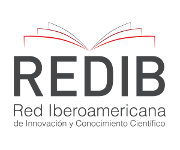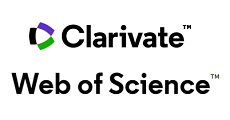Analyzing bone regeneration using topological optimization
Análisis del regeneramiento óseo bajo el esquema de optimización topológica
DOI:
https://doi.org/10.15446/ing.investig.v25n1.14617Keywords:
bony regeneration, topological optimisation, mathematical theory (en)dominio, optimización topológica, regeneramiento óseo, teoría matermática (es)
Downloads
The present article’s object is to present the mathematical foundations of topological optimization aimed at carrying out a study of bone regeneration. Bone structure can be economically adapted to different mechanical demands responding to topological optimization models (having “minimum” mass and “high” resistance). Such analysis is essential for formulating physical therapy in patients needing partial or total strengthening of a particular bone’s tissue structure. A mathematical model is formulated, as are the methods for resolving it.
El objetivo fundamental del presente artículo es presentar la fundamentación matemática de la optimización topológica para llevar a cabo el estudio del regeneramiento óseo. La estructura ósea posee la capacidad de adaptarse de forma económica (con un “mínimo” de masa y “alta” resistencia) a diversas solicitaciones mecánicas, lo cual responde a modelos de optimización topológica. Dichos esquemas de análisis son esenciales para la formulación de la terapia física en pacientes que necesiten fortalecer parcial o totalmente la estructura del tejido de algún hueso en particular. Inicialmente se formula el modelo matemático y sus métodos de solución.
References
Beer, F; Johnston, E., Mecánica de materiales, Ed. McGraw-Hill, México, Cuarta edición, 1993.
Campo, O., “Análisis de esfuerzos en la interfase implante cemento - hueso (ICH) en una endoprótesis típica de cadera”, Revista El Hombre y la Máquina No. 16, México, 1999.
Cowin, Stephen (editor). Bone Mechanics Handbook. CRC Press Boca Raton (E.U.A), segunda edición, 2001. DOI: https://doi.org/10.1201/b14263
Doblaré, M., et al. “Simulación del proceso de migración en prótesis de cadera mediante un modelo 3d de elementos finitos con rozamiento”, Métodos Numéricos en Ingeniería V (SEMNI), Madrid, quinta edición, 2002.
Duda, George N.; Schneider, Erich.; Chao, Edmund, “Internal Forces and Moments in the Femur During Walking”, J. Biomechanics, Elsevier Science Ltd., Londres, Vol. 30, No. 9, pp. 933-947, 1997. DOI: https://doi.org/10.1016/S0021-9290(97)00057-2
Fernández, Paulo.; Rubén, Rui, “Optimicao de forma de proteses da articulacao da anca”, Métodos Numéricos en Ingenieria V (SEMNI), Madrid, tercera edición, 2002.
Flinn, Richard, Trojan, Paul. Materiales de ingeniería y sus aplicaciones, Ed. McGraw-Hill, México, tercera edición, 1991.
Fondrk, M.T.; Bahniuk, E.H.; Davy, D.T., “A Damage Model for Nonlinear Tensile Behavior of Cortical Bone”. J. Biomechanical Engineering, Transactions of the ASME, Nueva York, Vol. 121, pp. 533-541, 1999. DOI: https://doi.org/10.1115/1.2835084
Gannong, William, Fisiología Médica, Ed. El Manual Moderno, México, décima edición, 1986.
Harris, William.; Sledge, Clement, “Total Hip an Total Knee Replacement”, The New England Journal of Medicine, E.U.A., Vol. 323, No. 11, pp. 725-731,1990. DOI: https://doi.org/10.1056/NEJM199009133231106
Jacobs, C.; Simo, Juan et al. “Adapatative Bone Remodeling Incorporating Simultaneous Density and Anisotropy Considerations”, J. Biomechanics, Elsevier Science Ltd., Londres, Vol. 30, No. 6, pp. 603-617, 1997. DOI: https://doi.org/10.1016/S0021-9290(96)00189-3
Keyak, Joyce et al., “Prediction of Femoral Fracture Load Using Automated Finite Element MODELING”, J. Biomechanics, Elsevier Science Ltd., Londres, Vol. 21, pp. 125-133, 1997. DOI: https://doi.org/10.1016/S0021-9290(97)00123-1
Sigmund, Ole, “A 99 Line Topology Optimization Code Written in Matlab”, Revista Structure Optimization, Springer Verlag, Vol. 21, pp. 120-127, Lyngby, 2001. DOI: https://doi.org/10.1007/s001580050176
How to Cite
APA
ACM
ACS
ABNT
Chicago
Harvard
IEEE
MLA
Turabian
Vancouver
Download Citation
License
Copyright (c) 2005 Diego Alexander Garzón Alvarado, Máximo Alejandro Roa Garzón, Carlos Alberto Duque Daza

This work is licensed under a Creative Commons Attribution 4.0 International License.
The authors or holders of the copyright for each article hereby confer exclusive, limited and free authorization on the Universidad Nacional de Colombia's journal Ingeniería e Investigación concerning the aforementioned article which, once it has been evaluated and approved, will be submitted for publication, in line with the following items:
1. The version which has been corrected according to the evaluators' suggestions will be remitted and it will be made clear whether the aforementioned article is an unedited document regarding which the rights to be authorized are held and total responsibility will be assumed by the authors for the content of the work being submitted to Ingeniería e Investigación, the Universidad Nacional de Colombia and third-parties;
2. The authorization conferred on the journal will come into force from the date on which it is included in the respective volume and issue of Ingeniería e Investigación in the Open Journal Systems and on the journal's main page (https://revistas.unal.edu.co/index.php/ingeinv), as well as in different databases and indices in which the publication is indexed;
3. The authors authorize the Universidad Nacional de Colombia's journal Ingeniería e Investigación to publish the document in whatever required format (printed, digital, electronic or whatsoever known or yet to be discovered form) and authorize Ingeniería e Investigación to include the work in any indices and/or search engines deemed necessary for promoting its diffusion;
4. The authors accept that such authorization is given free of charge and they, therefore, waive any right to receive remuneration from the publication, distribution, public communication and any use whatsoever referred to in the terms of this authorization.



























